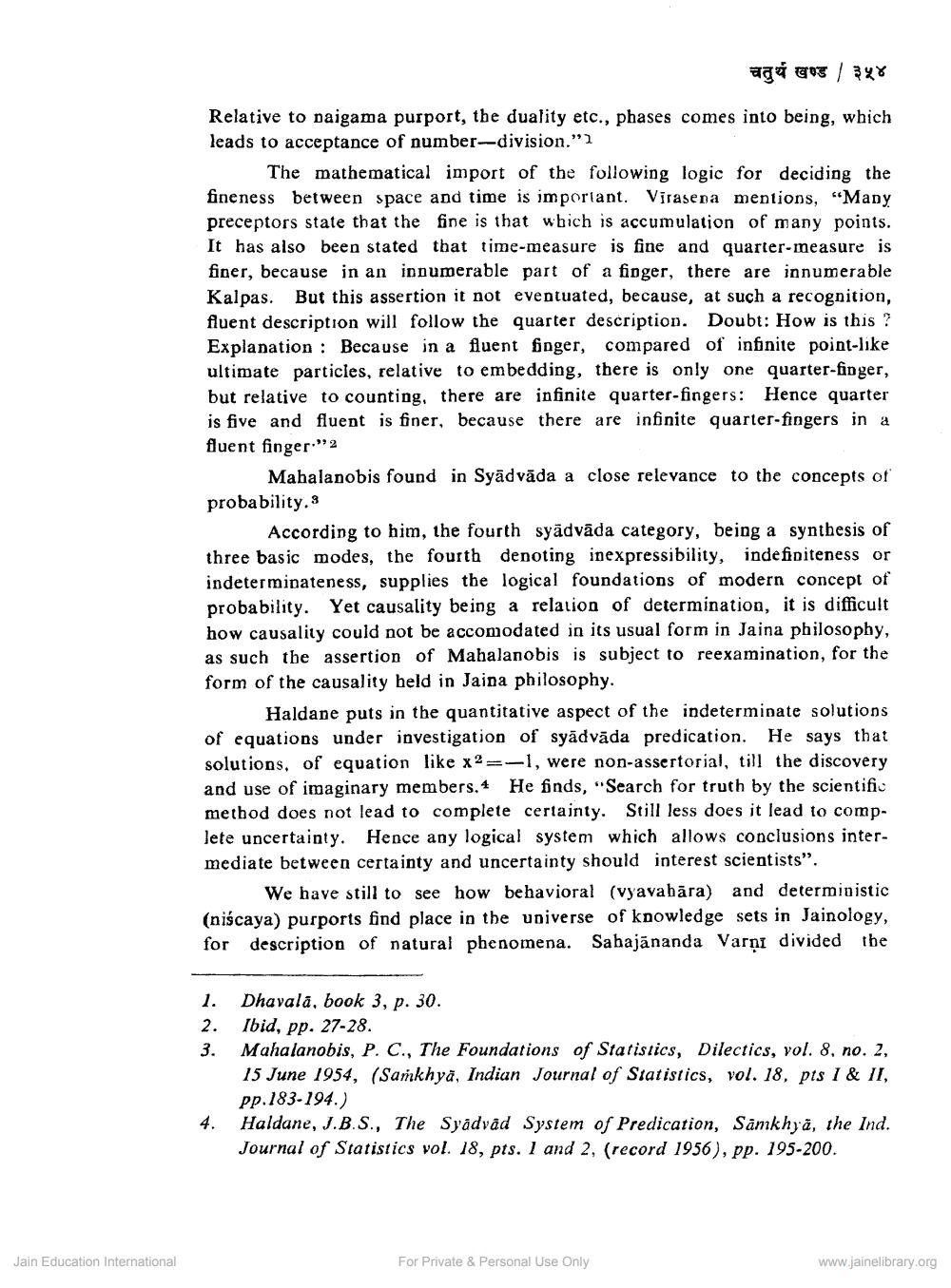________________
चतुर्थ खण्ड | ३५४
Relative to paigama purport, the duality etc., phases comes into being, which leads to acceptance of number-division.”
The mathematical import of the following logic for deciding the fineness between space and time is important. Virasena mentions, “Many preceptors state that the fine is that which is accumulation of many points. It has also been stated that time-measure is fine and quarter-measure is finer, because in an innumerable part of a finger, there are innumerable Kalpas. But this assertion it not eventuated, because, at such a recognition, fluent description will follow the quarter description. Doubt: How is this? Explanation : Because in a fluent finger, compared of infinite point-like ultimate particles, relative to embedding, there is only one quarter-finger, but relative to counting, there are infinite quarter-fingers: Hence quarter is five and fluent is finer, because there are infinite quarter-fingers in a fluent finger:"2
Mahalanobis found in Syādvāda a close relevance to the concepts of probability. 3
According to him, the fourth syādvāda category, being a synthesis of three basic modes, the fourth denoting inexpressibility, indefiniteness or indeterminateness, supplies the logical foundations of modern concept of probability. Yet causality being a relation of determination, it is difficult how causality could not be accomodated in its usual form in Jaina philosophy, as such the assertion of Mahalanobis is subject to reexamination, for the form of the causality held in Jaina philosophy.
Haldane puts in the quantitative aspect of the indeterminate solutions of equations under investigation of syādvāda predication. He says that solutions, of equation like x2=-1, were non-assertorial, till the discovery and use of imaginary members. 4 He finds, "Search for truth by the scientific method does not lead to complete certainty. Still less does it lead to compJete uncertainty. Hence any logical system which allows conclusions intermediate between certainty and uncertainty should interest scientists".
We have still to see how behavioral (vyavahāra) and deterministic (niscaya) purports find place in the universe of knowledge sets in Jainology, for description of natural phenomena. Sahajānanda Varņi divided the
1. Dhavala, book 3, p. 30. 2. Ibid, pp. 27-28. 3. Mahalanobis, P. C., The Foundations of Statistics, Dilectics, vol. 8, no. 2,
15 June 1954, (Samkhya, Indian Journal of Statistics, vol. 18, pts I & II, pp. 183-194.) Haldane, J.B.S., The Syādvad System of Predication, Samkhya, the Ind. Journal of Statistics vol. 18, pts. 1 and 2, (record 1956), pp. 195-200.
Jain Education International
For Private & Personal Use Only
www.jainelibrary.org




